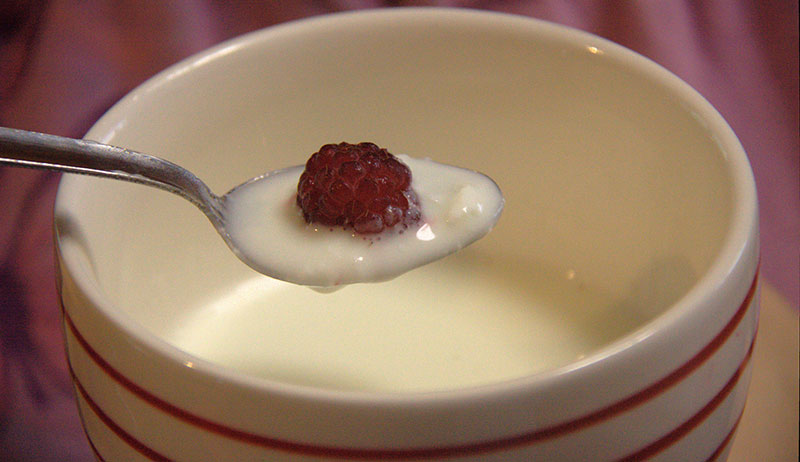Making homemade yogurt with cow’s milk, goat’s milk or soy milk is a breeze and a great way to save money on this delicious dairy product. The results are as consistent as you want to make them, despite an enormous number of variables in the process. Like all other fermented foods—including beer, sauerkraut and cheese—you’re working with a starter product and bacteria that do the work of fermentation, as well as time, temperature and equipment.
Fresh, raw milk from a single animal can vary tremendously from breed to breed, from season to season, and from pasture to pasture, depending on what the animal is eating, says Ricki Carroll, author of Making Cheese, Butter & Yogurt (Storey Publishing, 2003). To produce consistent fermented dairy products, she teaches her students that it’s critical to use clean, well-rinsed equipment and ingredients from known sources, as well as to be scrupulous about watching the thermometer and the clock.
You can alter the flavor and consistency of your homemade yogurt through your milk selection. Buying one brand of organic milk from the grocery store produces yogurt that is consistent from batch to batch. Fat-free milk works well, too, and raw milk also works as long as the animal is free of antibiotics. To make thicker yogurt, add 1/4 cup of powdered milk to the liquid milk you use.
The magic yogurt production comes during fermentation. You can buy starter bacteria from a cheese supply store or use 3 tablespoons of organic yogurt with live cultures. Widely available Stonyfield Farm organic yogurt contains six species of bacteria; other brands of organic yogurt are also available regionally.
You will only need two pieces of special equipment to make homemade yogurt: a dairy thermometer, which costs about $10, and an incubator or “yogurt maker.” Non-electric yogurt makers, essentially insulated buckets, cost from $35 to $48, and electric yogurt makers start at $15, though some people will incubate the yogurt in a low-temperature oven. The rest of the yogurt-making equipment should be readily available in your kitchen.
Follow the simple step-by-step recipe below so you’re never in short supply of this healthy, fermented dairy product.
Recipe: Homemade Yogurt
Ingredients
- 1/4 cup powdered milk
- 4 cups cow’s milk
- 1 packet powdered starter or 3 T. fresh yogurt containing live cultures
Preparation
Dissolve powdered milk in cow’s milk. In a double-boiler over low heat, heat the liquid to 180 degrees F, using a dairy thermometer to check temperature. Turn of burner and cool milk to 116 degrees F, and add powdered starter or fresh yogurt containing live cultures.
Cover mixture and place in incubator to maintain temperature of 116 degrees F for six hours, until it sets up to consistency of thick cream.
Refrigerate yogurt for up to two weeks, reserving 3 T to start your next batch.
Yogurt Variations:
- If you’re using goat’s milk, add 1 drop of rennet (available from a cheese-making supplier) to 4 T. unchlorinated water, then mix the diluted rennet into the milk, and continue with the cow’s milk process.
- If you’re using soy milk, heat the liquid to 110 degrees F, add the starter, and let it incubate at 100 degrees F until it sets up as yogurt.
- For flavored yogurt, mix in honey, maple syrup or fruit just before serving.





 Heirloom early potato varieties include Bliss Triumph, Irish Cobbler, and Early Ohio.
Heirloom early potato varieties include Bliss Triumph, Irish Cobbler, and Early Ohio. French toast is one of those indulgences that we never seem to have time to make. This recipe is simple and easy to clean up. There’s no excuse not to indulge with this dish. Try this recipe for French toast next time you want to use some of your chicken’s eggs.
French toast is one of those indulgences that we never seem to have time to make. This recipe is simple and easy to clean up. There’s no excuse not to indulge with this dish. Try this recipe for French toast next time you want to use some of your chicken’s eggs.
 Ingredients
Ingredients
